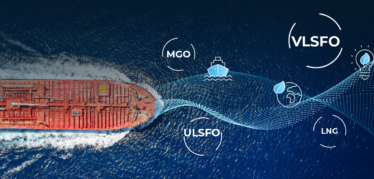The complexities involved in berth scheduling and rotation management are compounded by the vast number of variables that must be taken into account, such as the size of the vessel, the berth or port’s infrastructure, anticipated activity times, ever-changing voyage ETAs, and commodity shortages or surpluses that could prevent operators from loading or discharging the vessel as planned.
Effective berth scheduling and rotation require adherence to precise timelines with exact sequencing of cargoes. A suboptimal berth schedule or unanticipated backups at the berth can have an immediate cost impact in the form of demurrage as well as lasting negative effects on downstream processes.
Without a highly capable digital solution that is tightly aligned with marine supply chain workflows, the process of managing vessels, cargoes, timelines, and potential demurrage amid the evolving needs of business can be exceptionally difficult.
Today’s blog post explores the challenges berth schedulers and operators face without a digital solution, and how optimizing your berth rotations can produce incredible benefits across the organization.
Challenges Berth Schedulers & Operators Face
Despite its complexity and significant cost and process impact, the berth scheduling function is still widely managed through manual, disparate methods that leave room for error, inefficiency, backups at the berth, demurrage, missed internal and external commitments, and higher overall transportation costs.
Berth schedulers and operators are often heavily reliant on email, manual spreadsheets, and whiteboards to communicate and organize updates related to berth allocation, availability, port activities, and more. This high reliance on email dramatically increases the risk of demurrage and sequencing issues and creates a chasm between berth management and cargo management activities. In addition, having to rely heavily on tribal knowledge and unwritten assumptions can put organizations at a higher risk for avoidable errors, such as mismatched vessel and berth capacity, that often lead to costly demurrage.
Another significant issue many berth schedulers face is limited berth and port visibility, which hinders their ability to compare estimated and actual activity times and adapt when things don’t go as planned. With a manual approach, the berth scheduler’s knowledge is limited to the sporadic updates provided from shoreside operators. This poor visibility risks demurrage by increasing the time it takes to spot and react to backups at the berth as well as hinders the ability to utilize data to optimize discharge rates in the future.
A myriad of internal and external stakeholders rely on timely and accurate information from the berth. Without a digital solution, the transfer of this knowledge is handled manually and in a disparate fashion, risking data gaps that can compromise the efficiency and effectiveness of related business processes.
Benefits of Berth Scheduling Optimization
With the right digital solution in place for berth scheduling, these challenges can be overcome, and your organization can experience significant improvements that save valuable time, resources, and money.
An automated and streamlined approach to berth scheduling enables berth schedulers to shift away from cumbersome, non-standardized spreadsheets and unorganized, easy-to-misplace email communications as they embrace a single, dynamic workspace that integrates seamlessly with voyage and cargo activities to standardize planning and eliminate guesswork.
Leveraging the right digital solution for berth activities also provides berth schedulers with near real-time visibility into the activities taking place, meaning they can systematically consider the full range of variables to assign the right vessel to the right berth at the right time, understand what is happening at the berth at all times, compare planned vs. actual activities, automatically pull past-due activities forward, and proactively make scheduling adjustments to avoid demurrage.
In addition, an optimized approach to berth scheduling results in standardized data that can flow seamlessly across stages of the voyage. As port and berth activities can have dramatic cascading effects for internal and external processes and stakeholders, it is crucial that key stakeholders have access to the timely and accurate information they need to work efficiently and effectively.
Dynamically Manage Berth Activities With the Veson IMOS Platform
VIP Berth Scheduling transforms berth scheduling and rotation, which is why it is trusted by Veson Nautical’s vast and diverse user community. This powerful solution automates the berth scheduling process to optimize berth rotations, improve communication efficiency and effectiveness, reduce demurrage, and enhance continuity and shared knowledge. Learn more about VIP Berth Scheduling in the on-demand webinar below.



 Giftson Eliyesar
Giftson Eliyesar
 Hongbeom Park
Hongbeom Park
 Oliver Kirkham
Oliver Kirkham